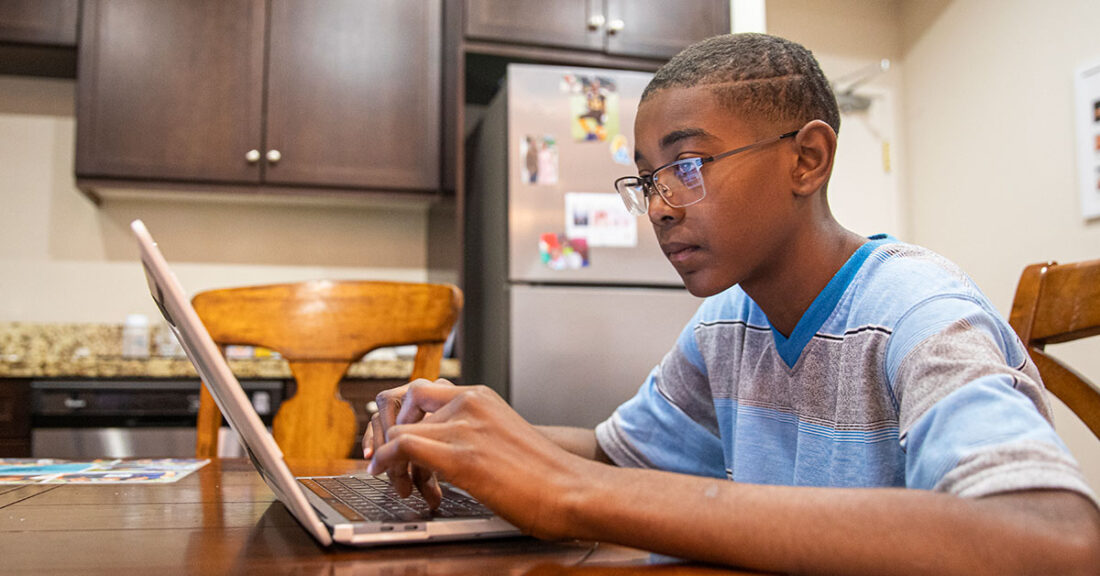10 Ways Juvenile Probation Can Meet the Coronavirus Challenge

Ten recommendations from the Annie E. Casey Foundation offer timely guidance to probation leaders who are adjusting their probation practices in light of COVID-19. Juvenile courts and probation agencies continue to provide support and services to young people on probation despite such obstacles as less frequent court sessions, social distancing and uneven access to technology. How these leaders adapt practices matters. Probation powerfully affects the lives of court-involved youth and can positively influence public safety when its practices follow what works to reduce delinquency in young people.
“Under COVID-19 restrictions, the probation field is leaning more heavily on young people’s families and communities as partners to provide the kinds of support that youth on probation need now,” says Steve Bishop, senior associate at the Foundation. “Juvenile courts and probation agencies are experimenting with approaches that could leave the field stronger after the pandemic.”
Improving juvenile probation
The following recommendations are based on the Casey Foundation’s vision for modernizing juvenile probation.
1. Maximize diversion from juvenile court
Divert youth from the court system when they are accused of less serious offenses or they do not pose a serious immediate risk to public safety. For youth whose cases were initiated just before and during this pandemic, courts should consider responses such as warning the young person and closing the case with no further intervention, rather than making young people wait months for their cases to be resolved.
2. Avoid sanctions for technical violations
Given the limited capacity for conducting court hearings and public health risks of confinement, avoid filing violations or confining children for behavior that breaks rules, not laws.
3. Collaborate with community partners to offer activities for youth on probation
Community-based organizations present a crucial resource for keeping youth constructively engaged. For community providers to continue to be able to effectively and creatively respond, they will need more financial support and flexibility from probation leaders.
4. Promote equity
The effects of the coronavirus pandemic have fallen hardest on young people and families of color and are exacerbated by structural and institutional racism. Probation leaders must make every effort to ensure that responses to the pandemic address the needs of youth of color. This will require careful attention to data to identify and address disparities arising from responses to the current situation, and special efforts to ensure access to social services, technology and relevant programming.
5. Minimize probation caseloads
Probation agencies should reinforce protocols to classify cases and make sure that staff focus their attention on young people who are most in need of support. Probation systems should consider terminating supervision when youth are near the end of their probation terms or have demonstrated they can succeed on their own.
6. Rely on family engagement
With many or most young people on probation sheltered in place, parents, caregivers and other family members in physical contact with a young person are key partners for youth on probation to succeed. Probation agencies may want to survey families to understand what they need to support their young person’s well-being.
7. Lead with incentives
Probation officers should continue to offer positive reinforcement to young people to encourage and promote desired behavior, including incentives that youth could redeem later.
8. Listen to the perspectives of young people
Probation leaders considering new and adapted responses should seek input from young people first. Wherever possible, probation leaders should engage trusted community organizations to facilitate surveys, interviews and online discussions with young people, creating a safe space for young people to speak openly and honestly.
9. Expand access to technology
For youth on probation to engage in online programming, they need internet-ready devices and affordable internet service. Several probation agencies have gained approval for youth to use computers and WiFi hotspots that have been issued by other public systems and agencies.
10. Maximize collaboration across public systems
Resources and services for youth on probation in areas such as education, recreation, social development, mental health and substance abuse may come from government and community partners. Collaborative efforts to support youth should be rooted in shared values that prioritize positive youth development.






